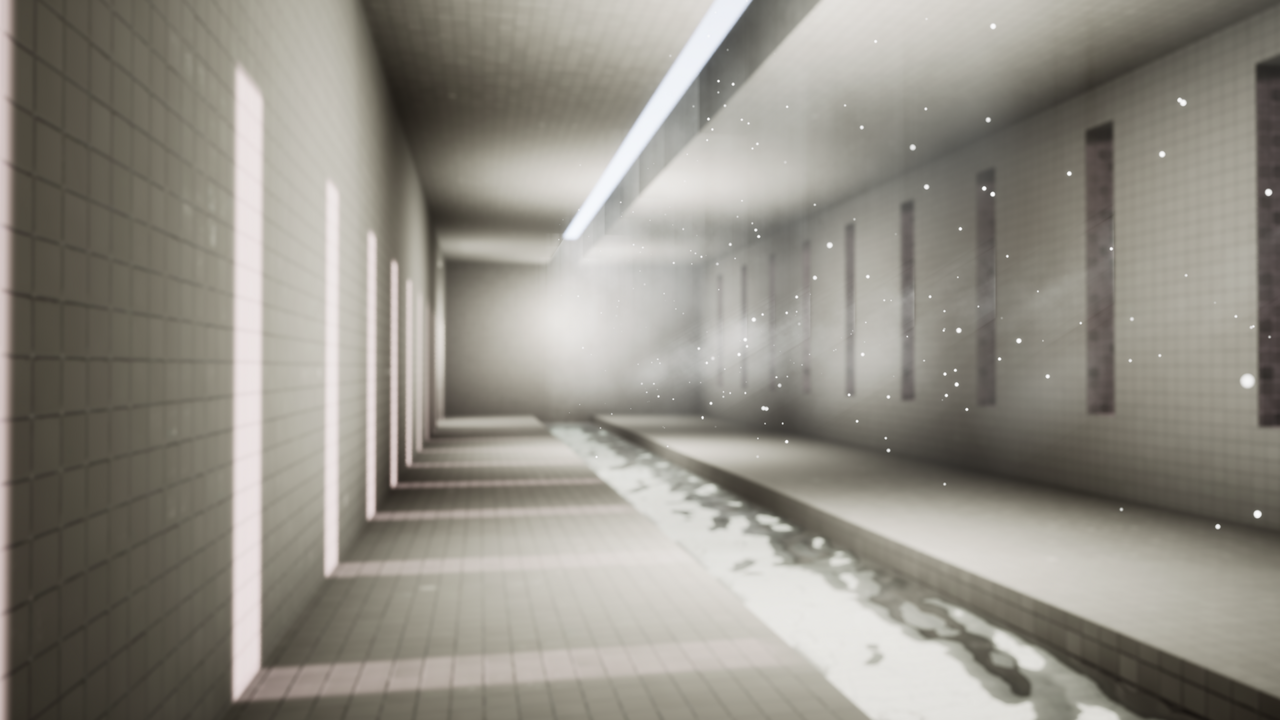
If you don’t know what The Backrooms are, you probably don’t have kids of a certain age. Born as a more specific branch of the liminal-space genre, The Backrooms is the all-encompassing name for a horror lore bible of sorts that’s been handcrafted by communities online over several years. Each inhuman monster and each unnerving location becomes a chapter of a horror universe that the internet built together. It’s grown so big that it’s spawned dozens of related games, an upcoming horror movie from A24, and what feels like an endless stream of YouTube content to watch. But through it all, Escape The Backrooms has remained one of the most popular portrayals of the fictional world, and now plays like a labyrinthine museum to one of the internet’s favorite scary stories.
Escape The Backrooms is a first-person defenseless horror game for up to four players in co-op. It’s been popular as a Steam Early Access title for a few years, but its 1.0 version has finally arrived. In Escape The Backrooms, you’ll explore a great number of the internet-created pocket universes of the wider Backrooms lore. Each “room” of The Backrooms presents a different take on liminal horror. This includes the iconic yellow labyrinth that kicked off the entire subgenre, as well as other popular landing spots, like Level Fun, the Poolrooms, and the Grassrooms. One of the game’s best feats is simply the number of locations it explores. By nature of being owned by, well, everyone in a sense, lore is played fast and loose. Escape The Backrooms does well in involving many of these different rooms, giving players a history lesson on its unsettling universe.

The gameplay loop is very simple. You’ll explore each eerie, liminal space while seeking different means of exiting. Mechanically, you’ll hardly do anything at all beyond waving a flashlight around and consuming found cartons of almond water to restore your ever-draining sanity meter. Sometimes, you’ll need to solve environmental puzzles, like learning which playground slide you can safely head down (since most eject you in several bloody chunks). Occasionally, key items, including literal keys, must be found to progress, forcing you to repeatedly head off in search of semi-randomly placed quest items. In an early level, you’ll need to rebuild a ladder to reach a key to the exit door, for example, while in another, you’ll search for elevators in a darkened parking garage that would be totally empty if not for the roaming “skin-stealer” monster hidden in the shadows.
This skin-stealer is especially creepy, as it dresses in the same yellow HAZMAT suit that you and your co-op pals wear, and it’ll call out on the radio pretending to be another player. But as soon as it sees you, it morphs into its true form, a towering grey-skinned aberration with zipper-like teeth running down its abdomen, and it pursues you until it either one-shot-kills you or you make it to one of the several safe rooms it can’t enter. And this is just one of many different monsters you’ll encounter, each of which are confined to the particular “rooms” to which they belong.
Whereas liminal spaces first blew up online for their unsettling emptiness, The Backrooms and its thick book of lore leans much further into housing monsters in its often dreamlike environments. Those who care to trace the divide online would find that adults have more often gravitated toward the strangely nostalgic yet inhuman worlds of liminal spaces as empty voids. They’re foreboding in their emptiness alone, playing on a sense of vague familiarity and hazy memories; closer to a place you’d recall from a dream than anywhere you’ve truly visited in your waking life.
In contrast, kids have mostly favored the overly blunt version of those spaces, sending creatures roaming through the halls that would already be immersive locales on their own merits. But in The Backrooms broadly, and Escape The Backrooms specifically, it’s much less subtle and thus less unnerving. I’m not often able to soak in the creepy vibes because a monster is probably barreling toward me within a minute or two of exiting a safe space, if a level has such spaces at all.

The scares feel cheaply achieved as a result, though they do remain effective thanks to some jolts in the volume level whenever monsters are chasing you or your friends. It’s not doing anything clever by repeatedly throwing unstoppable monsters at you across dozens of levels while only the setting changes, even though the setting is the best part. This isn’t a game of deep psychological scarring like Silent Hill, nor a slow-burning tension-builder like Amnesia. Escape The Backrooms is a horror game built for streaming. It creates plenty of jump-out-of-your-chair moments, and it’s as funny as things like Phasmophobia and Lethal Company in how it allows players to betray friends, or even fail earnestly, then cackle about it through the screams you share as a group.
Because it was in early access for a long time, Escape The Backrooms predates the ongoing “friend slop” trend of co-op games, though it fits right in. Lo-fi visuals and liminal horror go together very well, so the game is no worse off for offering some pretty simplistic sights of its own to see. Neither the players’ avatars nor the monsters are impressively detailed. Animations are basic, too, though not as jarring as those in Phasmophobia. The same could be said for the many levels you’ll explore, though in those cases, I find it vital to the experience. Liminal spaces are to horror what shoegaze is to music: It needs to be fuzzy for it to work.
While the gameplay isn’t complex or surprising, the environments are, especially if you’re less than fully schooled on Backrooms lore. There are dozens of levels to run through with your friends in Escape The Backrooms, each one of them unique and interesting, and taking these in as a whole winds up feeling like you’ve survived an immersive history lesson in the fairly new horror subgenre. Even players who kept up with the game through early access will find several new rooms added for this 1.0 launch. I really enjoyed that aspect of the game, especially when playing it with my son.

Through our shared experience, I saw the game in adjacent lights: once as the adult who was there for the creepy setting, but also as the pre-teen who taught me about all of the monsters and their traits based on everything he’d read online over the years. He knew them by name, knew their behavior, and together we guided each other through levels. It’s not a sophisticated game, but it is oddly an educational one if you’re looking for a playable museum dedicated to The Backrooms.
Ultimately, I came into Escape The Backrooms as a huge fan of liminal-space horror–seriously, you should see my Instagram algorithm. I left the game feeling unmoved to wade further into the more specific waters of The Backrooms. I definitely appreciate its ideas, and I love how those ideas have been handcrafted by the internet as a whole, like the world’s biggest campfire tale. But the gameplay loop is too sparse on fresh ideas beyond the excellently weird locations you’ll find yourself in at the end of each loading screen. Being chased through level after dizzying level often robs the environments of their strongest aspect: the surreal vibes. Escape The Backrooms feels like taking a tour through some memorable places, but on a tour bus that’s speeding through traffic.
- Security Camera Installation – indoor/outdoor IP CCTV systems & video analytics
- Access Control Installation – key card, fob, biometric & cloud‑based door entry
- Business Security Systems – integrated alarms, surveillance & access control
- Structured Cabling Services – voice, data & fiber infrastructure for new or existing builds
- Video Monitoring Services – 24/7 remote surveillance and analytics monitoring
Author: 360 Technology Group






.jpg?ssl=1)













